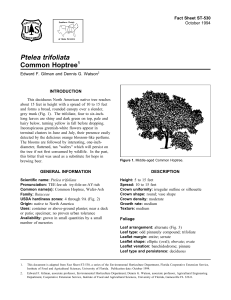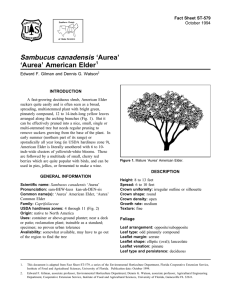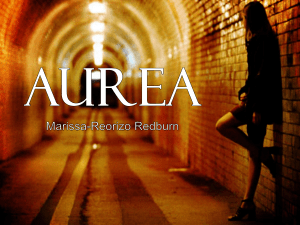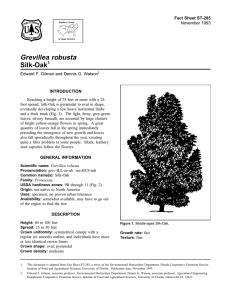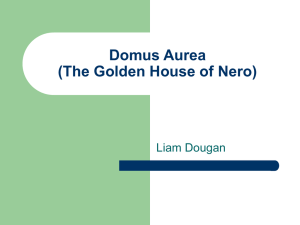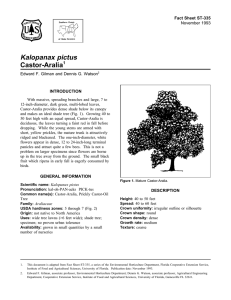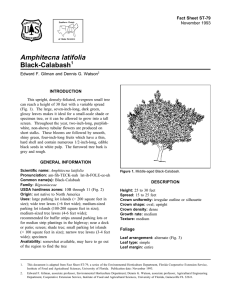Ptelea trifoliata ‘Aurea’ ‘Aurea’ Common Hoptree Fact Sheet ST-531 1
advertisement
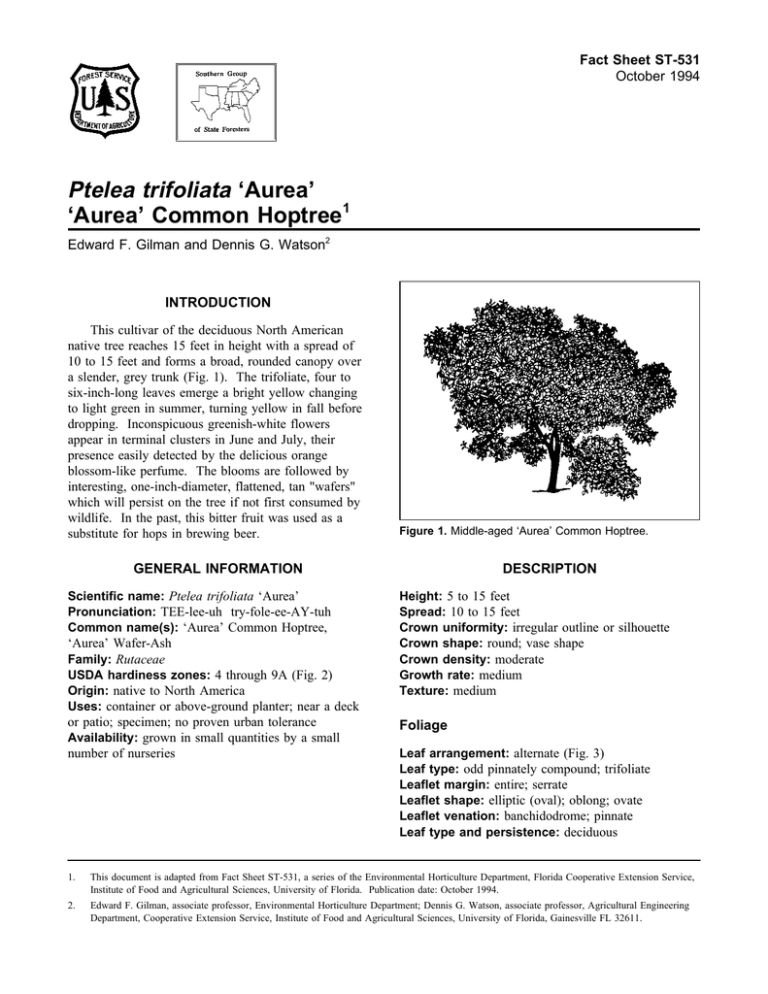
Fact Sheet ST-531 October 1994 Ptelea trifoliata ‘Aurea’ ‘Aurea’ Common Hoptree1 Edward F. Gilman and Dennis G. Watson2 INTRODUCTION This cultivar of the deciduous North American native tree reaches 15 feet in height with a spread of 10 to 15 feet and forms a broad, rounded canopy over a slender, grey trunk (Fig. 1). The trifoliate, four to six-inch-long leaves emerge a bright yellow changing to light green in summer, turning yellow in fall before dropping. Inconspicuous greenish-white flowers appear in terminal clusters in June and July, their presence easily detected by the delicious orange blossom-like perfume. The blooms are followed by interesting, one-inch-diameter, flattened, tan "wafers" which will persist on the tree if not first consumed by wildlife. In the past, this bitter fruit was used as a substitute for hops in brewing beer. Figure 1. Middle-aged ‘Aurea’ Common Hoptree. GENERAL INFORMATION Scientific name: Ptelea trifoliata ‘Aurea’ Pronunciation: TEE-lee-uh try-fole-ee-AY-tuh Common name(s): ‘Aurea’ Common Hoptree, ‘Aurea’ Wafer-Ash Family: Rutaceae USDA hardiness zones: 4 through 9A (Fig. 2) Origin: native to North America Uses: container or above-ground planter; near a deck or patio; specimen; no proven urban tolerance Availability: grown in small quantities by a small number of nurseries DESCRIPTION Height: 5 to 15 feet Spread: 10 to 15 feet Crown uniformity: irregular outline or silhouette Crown shape: round; vase shape Crown density: moderate Growth rate: medium Texture: medium Foliage Leaf arrangement: alternate (Fig. 3) Leaf type: odd pinnately compound; trifoliate Leaflet margin: entire; serrate Leaflet shape: elliptic (oval); oblong; ovate Leaflet venation: banchidodrome; pinnate Leaf type and persistence: deciduous 1. This document is adapted from Fact Sheet ST-531, a series of the Environmental Horticulture Department, Florida Cooperative Extension Service, Institute of Food and Agricultural Sciences, University of Florida. Publication date: October 1994. 2. Edward F. Gilman, associate professor, Environmental Horticulture Department; Dennis G. Watson, associate professor, Agricultural Engineering Department, Cooperative Extension Service, Institute of Food and Agricultural Sciences, University of Florida, Gainesville FL 32611. Ptelea trifoliata ‘Aurea’ -- ‘Aurea’ Common Hoptree Page 2 Figure 2. Shaded area represents potential planting range. Leaflet blade length: 2 to 4 inches Leaf color: green; yellow Fall color: yellow Fall characteristic: showy Flower Flower color: white Flower characteristics: pleasant fragrance; inconspicuous and not showy; summer flowering Fruit Fruit Fruit Fruit Fruit Fruit shape: round length: .5 to 1 inch covering: dry or hard color: brown characteristics: attracts birds; attracts squirrels and other mammals; no significant litter problem; persistent on the tree; showy Trunk and Branches Trunk/bark/branches: bark is thin and easily damaged from mechanical impact; droop as the tree grows, and will require pruning for vehicular or pedestrian clearance beneath the canopy; routinely grown with, or trainable to be grown with, multiple trunks; not particularly showy; tree wants to grow with several trunks but can be trained to grow with a single trunk; no thorns Pruning requirement: requires pruning to develop strong structure Breakage: resistant Current year twig color: brown Current year twig thickness: medium Culture Light requirement: tree grows in part shade/part sun; tree grows in the shade; tree grows in full sun Soil tolerances: clay; loam; sand; slightly alkaline; acidic; well-drained Drought tolerance: high Ptelea trifoliata ‘Aurea’ -- ‘Aurea’ Common Hoptree Page 3 Propagation is by seed, budding, layering, or grafting. Pests and Diseases No pests or diseases are of major concern although it is occasionally bothered by tree-hoppers, leaf spot, and rust. Figure 3. Foliage of ‘Aurea’ Common Hoptree. Other Roots: surface roots are usually not a problem Winter interest: no special winter interest Outstanding tree: tree has outstanding ornamental features and could be planted more Invasive potential: little, if any, potential at this time Pest resistance: long-term health usually not affected by pests USE AND MANAGEMENT One of a few small trees which performs well in deep shade. Plant it close to the patio or deck, or locate it in a shrub border for fragrant flowers and yellow fall color display. Its native habitat is dry, rocky upland sites making it well-suited for nonirrigated landscapes. Naturally found in the shade along the edges of woods, especially on rocky slopes in the Mississippi Valley, Wafer-Ash can be planted in full sun to deep shade and prefers well-drained, fertile, moist soil. While plants are better off if not exposed to extremes of wetness or dryness, Wafer-Ash is drought-tolerant once established. Transplants readily from the field. Other cultivars include: ‘Glauca’ with blue/green foliage.
